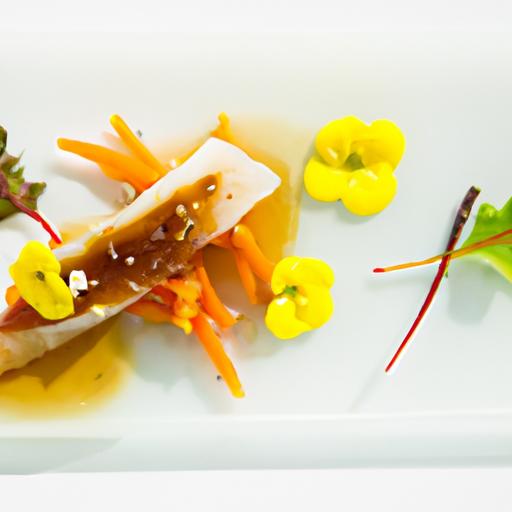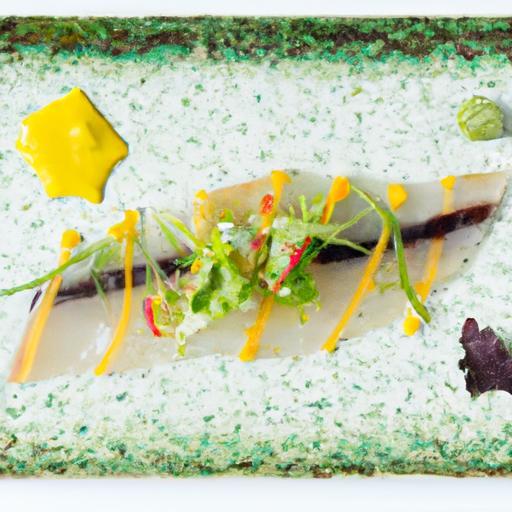In the vast symphony of flavors that dance across the palate, umami holds a mysterious allure-rich, savory, and deeply satisfying. At the heart of this fifth taste lies a culinary marvel from Japan: bonito flakes, or katsuobushi. These delicate, paper-thin shards of dried, fermented skipjack tuna may appear humble, yet they unlock a powerful umami essence that transforms simple dishes into unforgettable experiences. Journey with us as we unravel the magic of bonito flakes, exploring their history, artistry, and the secret they carry to elevate everyday cooking into an extraordinary feast.
Unlocking Umami: The Magic of Bonito Flakes (Katsuobushi) reveals the timeless charm nestled within this delicate yet intensely flavorful ingredient. Originating from Japan’s intricate culinary heritage, bonito flakes embody a deep umami essence that transforms even the simplest dish into a savory masterpiece. From my first taste of katsuobushi-laden dashi broth to experimenting with its smoky notes in modern recipes, I have come to cherish how it amplifies flavors with subtle complexity and aromatic depth.
Prep and Cook Time
- Preparation: 10 minutes
- Cooking: 15 minutes
- Total Time: 25 minutes
Yield
Serves 4 as a flavor enhancer or garnish
Difficulty Level
Easy – perfect for both beginners and seasoned cooks aiming to elevate their dishes
Ingredients
- 1 cup bonito flakes (katsuobushi), fresh and slightly flaky
- 4 cups water, filtered for clean dashi base
- 1 piece kombu (dried kelp), 4 inches square
- 2 tablespoons soy sauce, naturally brewed
- 1 teaspoon mirin, optional for subtle sweetness
- Freshly chopped scallions, for garnish
Instructions
- Prepare the Dashi Base: Gently wipe the kombu with a damp cloth to remove impurities. Soak it in 4 cups of cold water for 30 minutes-this softens the seaweed and extracts umami.
- Heat the Kombu Infusion: Slowly bring the water and kombu to just before boiling over medium heat. Remove the kombu right as tiny bubbles start forming-avoid boiling to prevent bitterness.
- Add Bonito Flakes: Immediately sprinkle 1 cup of bonito flakes into the hot water. Turn off the heat and let steep for 5 minutes, allowing the smoky aroma and savory notes to infuse deeply.
- Strain the Broth: Using a fine mesh sieve or cheesecloth, strain the dashi into a clean pot or bowl. Press gently to extract all flavorful liquids without crushing the flakes.
- Flavor the Broth: Stir in soy sauce and mirin to taste. This step enhances the natural umami and balances the savory layers.
- Use or Store: Utilize the broth immediately in soups, sauces, or stir-fries, or cool and refrigerate for up to 2 days to maintain its fresh complexity.
Chef’s Notes & Tips for Success
- Choose high-quality bonito flakes: Opt for thin, light-colored flakes with a pleasant smoky scent for maximum flavor impact.
- Experiment with texture: Add a small handful of flakes directly to salads or steamed veggies for a crispy, umami-packed contrast.
- Make-ahead dashi: Prepare a batch and freeze in ice cube trays for portioned convenience in future recipes.
- Substitutions: While kombu adds oceanic depth, using only bonito flakes creates a more direct smoky profile.
- Visual delight: Garnish dishes with a delicate tangle of bonito flakes that dance with heat, showcasing their ethereal quality.
Serving Suggestions
Bonito flakes are wonderfully versatile. Serve the dashi broth as a base for miso soup with silken tofu and seaweed. Sprinkle flakes atop freshly steamed rice or mix into okonomiyaki and takoyaki for authentic crunch and flavor bursts. For creative flair, toss flakes with lightly dressed greens or blend into mashed potatoes for an umami punch.

Nutritional Information per Serving
| Component | Amount |
|---|---|
| Calories | 15 kcal |
| Protein | 3 g |
| Carbohydrates | 0 g |
| Fat | 0 g |
To dive deeper into traditional Japanese cooking, don’t miss our article Japanese Ingredients Guide. For scientific insights on the umami sensation, visit the National Institutes of Health.
Q&A
Q&A: Unlocking Umami – The Magic of Bonito Flakes (Katsuobushi)
Q1: What exactly are bonito flakes, and why are they so special?
A1: Bonito flakes, or katsuobushi, are thin, delicate shavings of dried, fermented skipjack tuna. But they’re much more than just fish flakes – they’re the essence of umami, the mysterious “fifth taste” that is deeply savory and satisfying. Through a meticulous process of smoking, fermenting, and drying, these flakes develop a complex depth that instantly elevates any dish they touch.
Q2: How do bonito flakes contribute to the flavor of a dish?
A2: When sprinkled on hot dishes, bonito flakes dance and curl, releasing smoky, oceanic aroma and a burst of umami. They add a subtle smoky sweetness and a punch of savory depth that can transform simple broths, rice bowls, and even salads into rich, layered culinary experiences.
Q3: What’s the history behind katsuobushi?
A3: Katsuobushi traces its origins back hundreds of years in Japan, where preservation methods were essential for storing protein-rich fish. The art of smoking and fermenting bonito not only preserved the fish but created a flavor powerhouse cherished in Japanese cuisine. Today, it’s a cornerstone of traditional dishes like dashi stock, the foundation of many Japanese soups.
Q4: Can bonito flakes be used beyond Japanese cooking?
A4: Absolutely! Bonito flakes are global umami enhancers waiting to be explored. Try sprinkling them over popcorn for a crunchy, savory twist, blend them into pasta sauces for depth, or use them to finish off roasted veggies. Their smoky depth complements many cuisines and adds an unexpected magic.
Q5: Is there a difference between regular bonito flakes and katsuobushi?
A5: Often used interchangeably, traditional katsuobushi undergoes a lengthy fermentation process that intensifies its flavor and umami compounds. Some commercially sold bonito flakes might be simply smoked and dried without fermentation, which can result in milder taste. For the full magic, seek out authentic katsuobushi.
Q6: How should bonito flakes be stored to preserve their flavor?
A6: To keep that dazzling umami punch, store bonito flakes in an airtight container away from light, heat, and moisture – ideally in the refrigerator. This prevents degradation and keeps the flakes crisp and flavorful for weeks.
Q7: Any tips for cooking with bonito flakes?
A7: Treat them gently! Add them toward the end of cooking to preserve their delicate aroma and texture. For making dashi, steep flakes in hot water briefly, then strain to capture their full umami essence without bitterness. And don’t forget to watch them dance atop hot dishes-a delicious performance as much as an ingredient!
Bonito flakes aren’t just a seasoning; they are a sensory experience and an umami key to unlock the hidden depths of your cooking. Whether in a humble soup or an adventurous fusion dish, these flakes deliver a sprinkle of culinary magic.
To Wrap It Up
As we close the chapter on the captivating world of bonito flakes, it’s clear that katsuobushi is much more than just a seasoning-it’s a bridge to umami’s deepest mysteries. These delicate, smoky shavings, crafted through centuries of tradition, unlock a symphony of flavors that can transform everyday dishes into unforgettable culinary experiences. Whether sprinkled atop a steaming bowl of ramen or infused into a rich dashi broth, bonito flakes invite us to savor the subtle magic woven into the heart of Japanese cuisine. Embracing katsuobushi is not just about tasting umami; it’s about discovering the art of flavor itself-one fragrant flake at a time.


